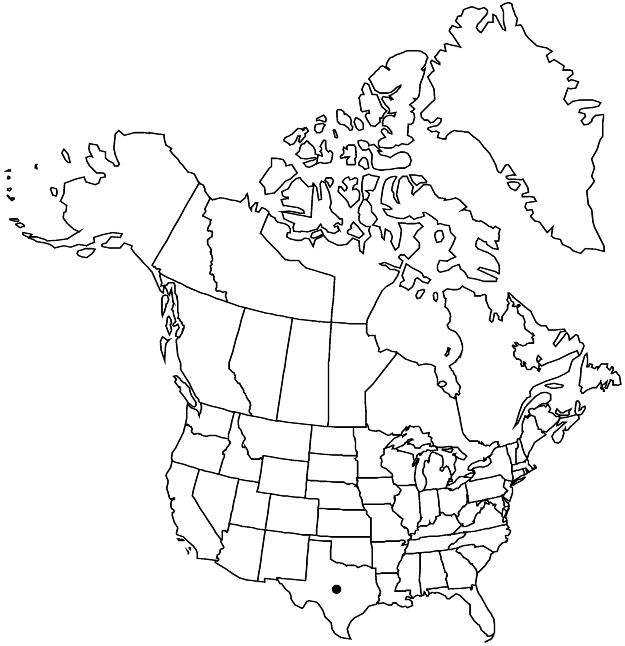Hibiscus dasycalyx
J. Wash. Acad. Sci. 48: 277, fig. 1. 1958.
Herbs, perennial, to 2.5 m. Stems glabrous. Leaves: stipules linear-subulate, 1.5–5 mm; petiole 1/2–3/4 blade, glabrous; blade narrowly to broadly-triangular-ovate, deeply hastately 3-lobed, 5–12 × 1–14 cm, base cordate to truncate, lobes linearlanceolate, 3+ times as long as wide, margins coarsely and remotely serrate, apices long-acuminate, surfaces glabrous, nectary absent. Inflorescences solitary flowers in axils of distal leaves. Pedicels jointed medially to distally, 1–3 cm, 1/3–2/3 times subtending petioles, minutely hairy distal to joint; involucellar bractlets 8–10, linear-subulate, 1.8–2.2 cm, margins inconspicuously ciliate, simple-hairy. Flowers ± horizontal; calyx divided 1/3 length, broadly cylindric-campanulate, 1.5–3 cm, larger in fruit, lobes very broadly triangular and subtrullate, apices apiculate, hairy, hairs simple, 1+ mm, underlain by shorter stellate ones, veins sometimes zigzag, nectaries absent; corolla broadly funnelform, petals creamy white, deep red basally, obovate, 4.5–7 × 3–5.5 cm, apical margins repand, sometimes undulate, sometimes minutely hairy abaxially where exposed in bud; staminal column straight, pale-pink to white, 2.5–3 cm, length 1/2 petals, bearing filaments nearly throughout, free portions of filaments not secund, 1–2 mm; pollen pale-pink to purple; styles cream, 4–10 mm; stigmas cream. Capsules brown, ovoid, 1.6–2.8 cm, apex rounded-truncate, apiculate, hairy. Seeds reddish-brown to brown, reniform-globose, 3.5 mm, hairy, hairs reddish-brown. 2n = 38.
Phenology: Flowering mid Jun–mid Aug.
Habitat: Open marshy habitats, seasonally wet alluvial soil, edges of ponds
Elevation: 50–100 m
Discussion
Of conservation concern.
R. A. Klips (1995) suggested that Hibiscus dasycalyx might better be treated as a subspecies or variety of H. laevis; R. L. Small (2004) found molecular evidence that it should be maintained as a species. It is known only from Cherokee, Harrison, Houston, and Trinity counties in eastern Texas.
Hibiscus dasycalyx is in the Center for Plant Conservation’s National Collection of Endangered Plants.
Selected References
None.
Lower Taxa
"/3" is not declared as a valid unit of measurement for this property."not secund" is not a number.
